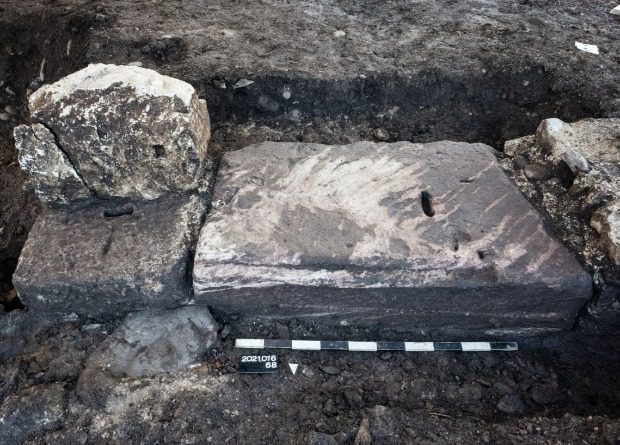Archaeologists have found the remains of an ancient Roman amphitheater in Switzerland. An oval-shaped structure measuring about 50 × 40 meters was built in the 4th century AD in the city of Augusta Raurica. This is the eighth Roman amphitheater ever discovered in Switzerland. This was reported in a press release from the canton of Aargau.
In Switzerland, about 11 kilometers from modern Basel, was the ancient Roman city of Augusta Raurica, which was founded by the future consul Lucius Munatius Plancus in 44 or 43 BC. Today, this settlement is considered the oldest Roman colony founded on the Rhine. According to archaeologists, the active colonization of these lands began a little later – after 15 AD, when the Roman emperor Octavian Augustus conquered the Central Alps. Augusta-Raurica reached its heyday by about 200 AD, when about 10-20 thousand people lived in it. However, despite the rapid growth of the population, the constant attacks of the Alemanni, the earthquake of 250 and political unrest forced most of the inhabitants to leave the city.
Interest in the ruins of Augusta-Raurica arose as early as the Renaissance. So, the first excavations of this monument were carried out back in the 16th century by the lawyer and collector Basilius Amerbach, who, in particular, examined the remains of the ancient theater. Flashes of interest in this monument occurred at different times, but its full-fledged excavations began only in the 1960s, when a construction boom swept Switzerland. Some of the structures have been documented by archaeologists and dismantled, but many Roman buildings have been preserved, such as the theater for 8000 spectators, the main forum with the temple of Jupiter and the basilica, the aqueduct and the remains of the amphitheater.
Swiss archaeologists have carried out security and rescue excavations that precede the construction of a new boathouse of the Basel Rowing Club in the city of Kaiseraugst, on the territory of which the city of Augusta-Raurika was located in ancient times. Researchers have discovered the remains of a previously unknown amphitheater.
Archaeologists have unearthed the remains of an oval-shaped structure, which was about 50 meters long and 40 meters wide. On the south side of this amphitheater there were large gates, next to which there were two entrances. Another entrance was located on the western side of the arena, from which a limestone threshold has been preserved.
Scientists reported that the inner walls of this amphitheater were lined with thin plaster. According to archaeologists, in the 4th century AD, spectators came to this arena, who were placed on wooden stands to watch gladiator fights or baiting animals. Eight such structures are now known throughout Switzerland, including three in Augusta Raurica, as well as in the Roman military camp of Vindonissa and in the settlement of Aventicum.
Photo: Kantonsarchaologie Aargau









